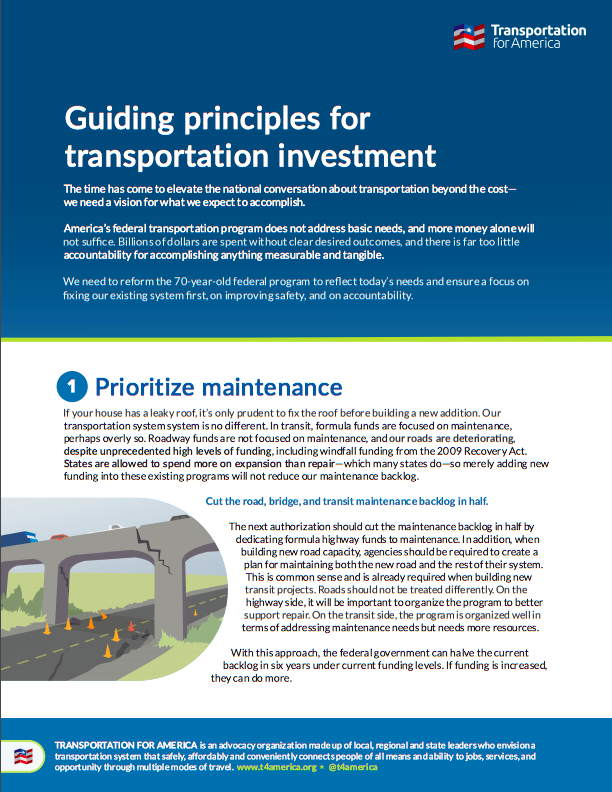Ten things to know about USDOT’s new framework to guide the future of automated vehicles
The USDOT’s newly released policy guidance for automated vehicles is consistent with Congress’ attempts to limit regulations and give private industry carte blanche to operate mostly in secret with little public oversight.
Small groups, big questions: 12 roundtable conversations at Capital Ideas 2018
Capital Ideas 2018 will be full of inspiration and best practices. But even with an agenda full of national experts, we know that we won’t possibly have all the answers to every community’s challenges.
Why don’t DOTs pick routes like we do?
Your GPS gives you the choice of two routes. One would take 15 minutes, but you’d travel at only 20 miles per hour. One would take 46 minutes, but you’d get to travel at 60 miles per hour. Which do you pick?
Mixed messages on transportation at the ballot box this week
With a range of notable ballot measures for transportation considered by voters Tuesday, how did the issue fare at the ballot box? Did the recent trends for transportation-related measures continue?
Crookston, MN: Where investment in public transit and hard-working Americans “help buses come alive”
Last week Transportation for America traveled to one of New Flyer of America’s transit bus manufacturing facilities in northern Minnesota to meet with state and local leaders like State Representative Deb Kiel, and get a close look at the economic impact of public transportation dollars on Minnesota manufacturing jobs.
Florida is out in front on driverless vehicles
The State of Florida knows that the way they’ve done transportation projects for the last 50 years won’t be the way to do them for the 50 years ahead. That’s why the Florida Department of Transportation, in partnership with the City of Gainesville, state legislators, and mobility company Transdev, are piloting one of the first autonomous vehicle shuttle projects in the country.
Cities eager to receive transit dollars from USDOT are receiving letters instead
Instead of approving projects and providing the money cities have applied for, USDOT is “allowing” cities to move ahead with construction on transit capital projects and incur costs that might one day be reimbursed by USDOT.
A bipartisan effort to help states and metro areas determine if their transportation systems get you there
Providing states and metro areas with powerful data and accessibility tools can help them better measure the destinations that their residents can easily reach, equipping transportation agencies to more effectively plan investments that will help address those gaps.
Cities left in the dark by an agency that once partnered with them to build new transit
Many local transit project sponsors are in the dark about the status of their applications for federal transit funds, left to wonder why the Federal Transit Administration (FTA) has not granted funding to their projects. But these cities have remained publicly quiet about it for fear of harming their chances of eventually receiving funding, taking the pressure off the administration to fund and support transit projects.
How cities can reduce traffic instead of just ensuring more of it
A new approach to addressing the potential transportation impacts of new development in urban areas, outlined in a new report by our State Smart Transportation Initiative (SSTI), could be a powerful recipe for reducing the demand for driving, while helping create more prosperous transit- and pedestrian-friendly cities.





